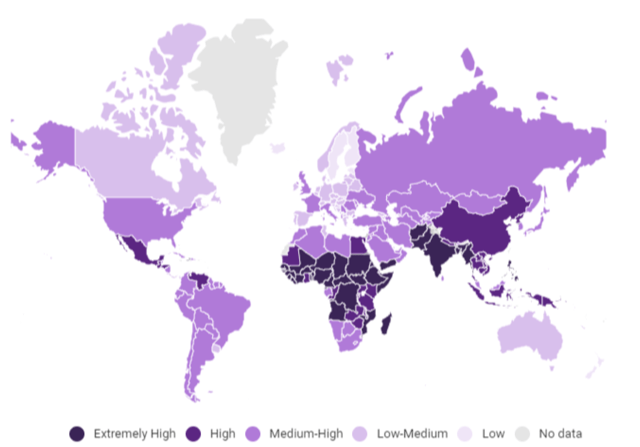UPSC Articles
Children’s Climate Risk Index: UNICEF
Part of: Prelims and GS – II – Issues related to children and GS – III -Environmental Impact assessment
In news Recently, the United Nations Children’s Fund (UNICEF) in collaboration with Fridays for Future launched a report named ‘The Climate Crisis Is a Child Rights Crisis: Introducing the Children’s Climate Risk Index’.
What is Children’s Climate Risk Index?
- It is the first comprehensive analysis of climate risk from a child’s perspective.
- It ranks countries based on children’s exposure to climate and environmental shocks, such as Cyclones and Heatwaves, as well as their vulnerability to those shocks, based on their access to essential services.
- Pakistan (14th), Bangladesh (15th), Afghanistan (25th) and India (26th) are among four South Asian countries where children are at extremely high risk of the impacts of the climate crisis.
Indian Scenario:
- India is among four South Asian countries where children are most at risk of the impacts of climate change threatening their health, education, and protection.
- It is estimated that more than 600 million Indians will face ‘acute water shortages’ in the coming years, while at the same time Flash Flooding is to increase significantly in the majority of India’s urban areas once the global temperature increase rises above 2 Celsius.
- Twenty-one of the world’s 30 cities with the most polluted air in 2020 were in India.
Global Scenario:
- Young people living in the Central African Republic, Chad, Nigeria, Guinea, and Guinea-Bissau are the most at risk of the impacts of climate change.
- These children face a deadly combination of exposure to multiple climate and environmental shocks with a high vulnerability due to inadequate essential services, such as water and sanitation, healthcare and education.
What are the Recommendations?
- Increase Investment
- Reduce Greenhouse Gas Emissions: Countries must cut their emissions by at least 45% (compared to 2010 levels) by 2030 to keep warming to no more than 1.5 degrees Celsius.
- Provide Climate Education
- Include Young People in Decisions
- Ensure Pandemic Recovery is Inclusive

News source: DTE














